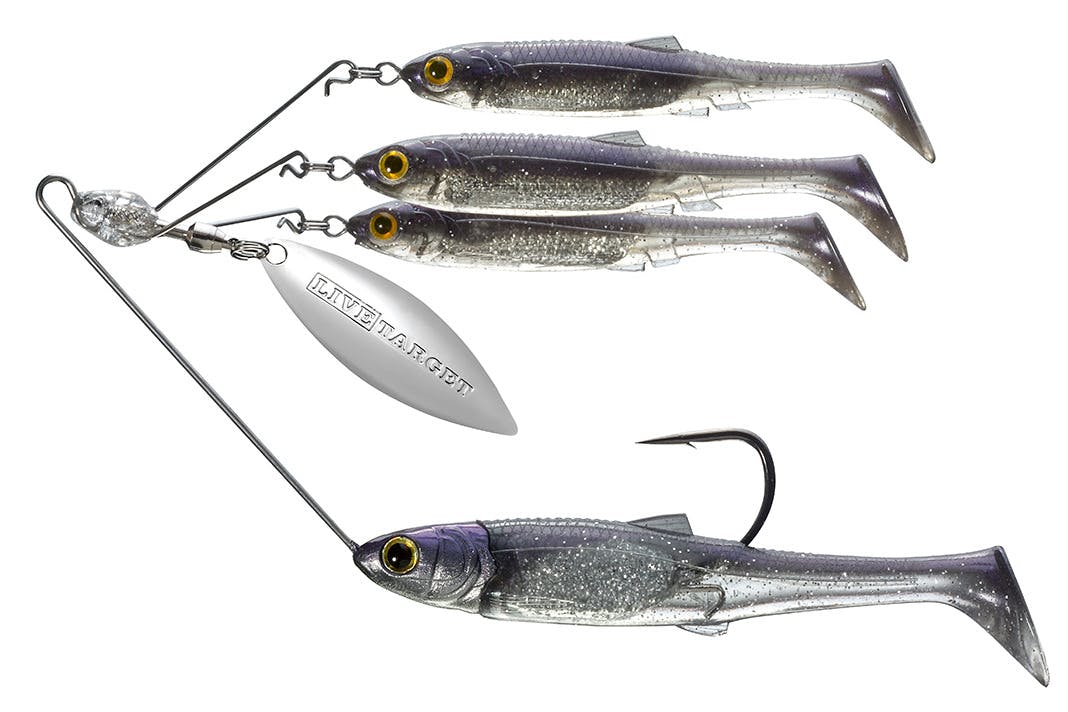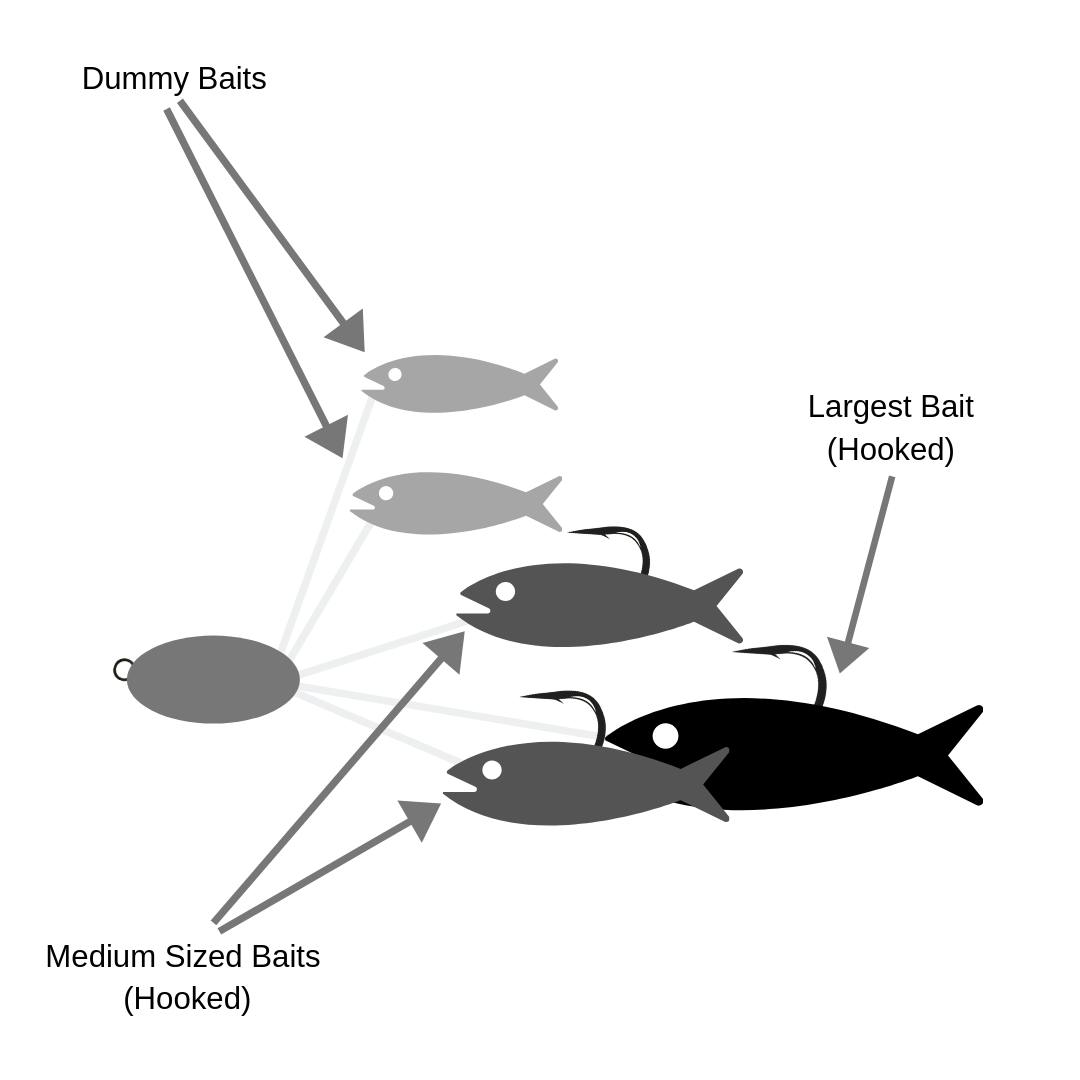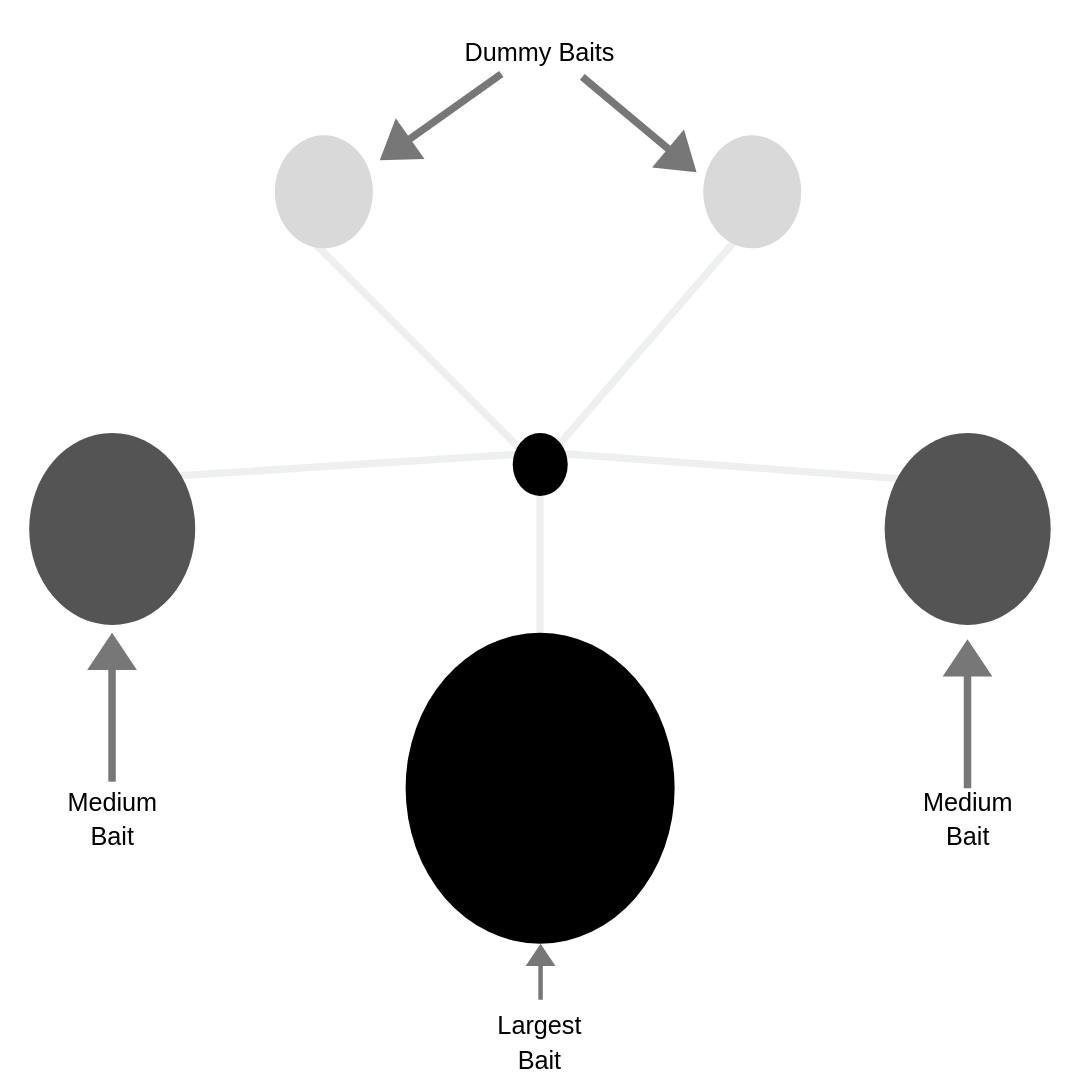
How to Fish the Umbrella Rig
Overview
The Umbrella Rig, commonly called the A-Rig, took the fishing world by storm in 2011 and has been catching big bass since. This contraption consists of wires, blades, hooks, and dummy baits to create a school of bait swimming through the water. This school will draw fish in from far distances and with some small adjustments to the swimbaits will make fish commit to striking. These key adjustments to the bait will be the difference between one of the best days of fishing or not getting a single bite. Being in tune with these differences and putting this bait in the right location can lead to an epic day on the water.
Attention: Not all states have the same laws and regulations regarding the Umbrella Rig. Read your state's specific guidelines to follow ethical fishing practices. Most states limit the number of hooks allowed on the bait.
How To Set Up An Umbrella Rig
When taking an umbrella rig out of the package, it can look like a complicated nightmare. The numerous wires and blades can look daunting. However, breaking it down into the wire style and shape will make everything much easier. Starting with the wire size, the main detail to note is water clarity. When fishing in crystal clear water, thinner wire is desired. Thinner wire is harder for the fish to see and also because thinner wire is not as rigid it will allow the bait to move more fluidly in the water.
Details and consistency are key when shaping the umbrella rig. This is one of the few hard baits that you, the consumer, need to adjust straight from the package. Simply pulling the bait out and putting hooks on will not suffice. There is a specific shape that will look more natural and put more fish in the boat. It starts with 2 small dummy baits on top, 1 large bait in the middle that is connected to a slightly longer and lower wire, and 2 mid size baits on either side of the large bait.


As you can see in the diagram, the dummy baits are even with one another and are almost vertical. These are attached to the rig using the Owner Center Pin Spring. This spring takes out the need for a hook and is the most natural way to secure the dummy baits. The baits that have hooks are a little different, the medium sized baits are horizontal and will be attached using a jig head like the Golden Eye Swimmer Head from Outkast Tackle. Use a ⅛ or ¼ oz on these side baits. In order to keep this bait swimming straight, using a ½ oz jig head in the middle will act like a keel and keep the bait balanced and centered when swimming.
When choosing which baits, the 2.8” Keitech Swing Impact Fat in a natural color like Ghost Rainbow Trout is excellent for the dummy baits. Sizing up just slightly, the 3.3” Keitech Swing Impact Fat in a color that has more presence, like a Green Pumpkin, are best when used on the side of the rig. These medium sized baits are likely going to get bit, however the “cherry on top’’ is the largest bait that is slightly below and behind the rest of the baits. This creates the effect of the weakest linking straggling behind the school. Using a 3.8 Keitech Swing Impact Fat in Ayu will be a brighter and larger bait than the 2 Green Pumpkin swimbaits on either side of it. These subtle differences are the keys to getting bit.
Bonus tip: When rigging the largest bait, try dying or coloring the tail and head in chartreuse for extra distinction. This very small area of difference can be a target for the bass to zero in on.
Where to Fish the Umbrella Rig
The umbrella rig is not a bait that requires particular situations. This can be thrown on the sides of docks, bluff walls, open water, over the top of grass, or anywhere bait fish are present (basically everywhere). The umbrella rig can be fished in all water clarities and works on both smallmouth and largemouth lakes. The deep, clear water of some northern smallmouth lakes can allow fish to find and track the bait from far distances. A common misconception with the umbrella rig is that it can only be fished in bodies of water with shad. This is false. Obviously this rig is great at imitating shad, but it is also great at representing almost any kind of baitfish.
Gear Needed to Fish the Umbrella Rig
Rod
When this bait first became popular in 2011, it was thought that you needed a dedicated rod just for this bait. At the time it came out, many anglers were fishing a stout 8 foot swimbait or flipping rod. Although some still do this, many have switched to a more common rod such as a 7’ to 7’6 medium or medium heavy depending on how big of a rig is being thrown. These smaller rods are much more comfortable and can be fished over a full day with less fatigue.
Reel
The umbrella rig can be fished on a variety of reels, some like the high gear ratio to catch up to fish that bite and swim at you, but some prefer the slower reels that offer a bit more torque. Because this is a cast and retrieve style bait, having a larger reel with more line capacity will result in the longest casts. The Shimano Curado K provides all of these options.
Line
Anglers are usually using braided line or fluorocarbon when fishing the umbrella rig. The attraction to braid is the power and sensitivity that it provides. It is capable of letting you feel those fish who swipe the baits but don’t connect on a hook. Most of these braided line users will use a fluorocarbon leader. Many of the northern anglers will use the fluorocarbon for the clear water smallmouth. These fish can be line shy and having the thinnest, clearest line is important to get every advantage possible for visual feeders.
Braided line recommendation: 50 pound Power Pro
Fluorocarbon recommendation: 20 pound Seaguar AbrazX